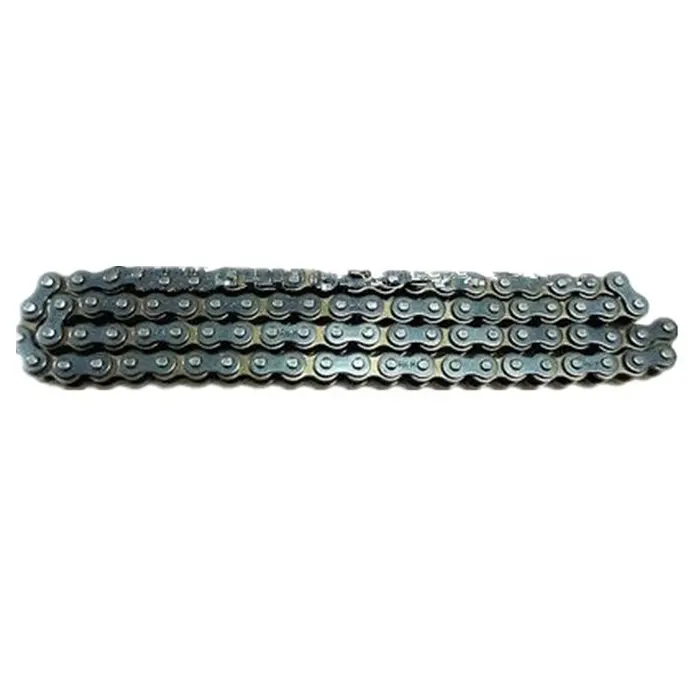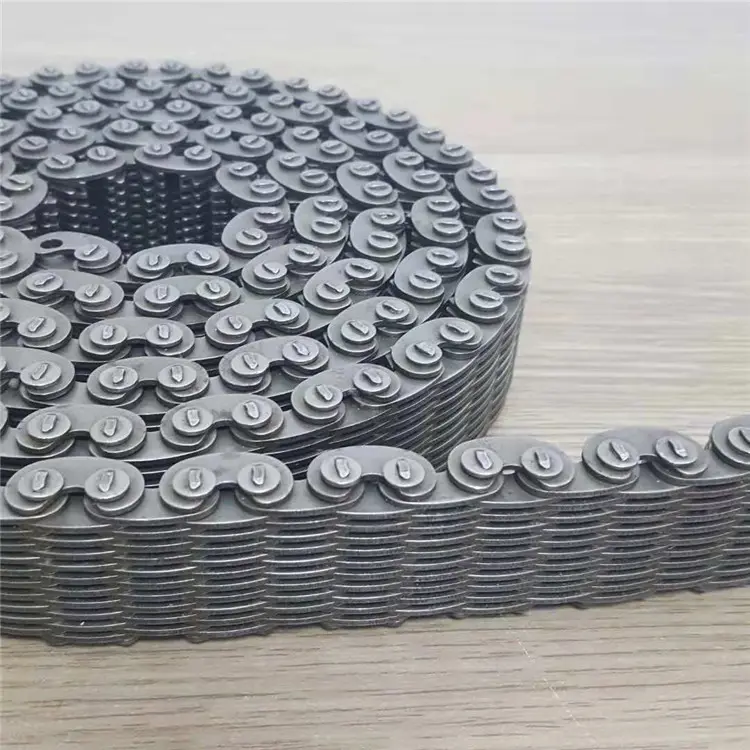Product Description
Product Description
1. Standard : ISO /DIN /ANSI
2. Model : 25-1; 35-1; 40-1; 50-1; 60-1; 80-1; 1/8822 0571 -57152031 Fax: 86~/8822 0571 -57152030
Http://kasinchain
| Standard or Nonstandard: | Standard |
|---|---|
| Application: | Textile Machinery, Garment Machinery, Conveyer Equipment, Packaging Machinery, Electric Cars, Motorcycle, Food Machinery, Marine, Mining Equipment, Agricultural Machinery, Car |
| Surface Treatment: | Oil Blooming |
| Structure: | Roller Chain |
| Material: | Alloy |
| Type: | Short Pitch Chain |
| Samples: |
US$ 1.20/Meter
1 Meter(Min.Order) | |
|---|
| Customization: |
Available
| Customized Request |
|---|

What are the signs of wear and tear in a motor chain?
Over time, a motor chain can experience wear and tear due to usage, environmental factors, and lack of proper maintenance. It’s important to monitor the condition of the motor chain regularly to identify signs of wear and address them promptly. Here are some common signs of wear and tear in a motor chain:
1. Chain elongation: One of the most noticeable signs of wear in a motor chain is elongation. The chain may appear longer than its original length due to stretching and wear of the pins, bushings, and rollers. Excessive chain elongation can cause poor performance, increased noise, and affect the overall efficiency of the system.
2. Increased chain noise: As a motor chain wears, it can produce more noise during operation. Excessive noise can indicate worn-out or damaged components, such as pins, bushings, or rollers. It’s important to investigate and address the source of the noise to prevent further damage and ensure smooth operation.
3. Chain slack or looseness: If the motor chain exhibits excessive slack or looseness, it may indicate wear and elongation. Proper tension is essential for the efficient transfer of power, and a loose chain can cause slippage and decreased performance.
4. Visible signs of damage: Inspect the motor chain visually for any visible signs of damage, such as broken links, cracked plates, or worn-out pins and bushings. These signs indicate significant wear and may require immediate attention or replacement of the chain.
5. Uneven wear: Uneven wear patterns on the chain’s components, such as unevenly worn pins or bushings, can indicate misalignment or other issues. Identifying and addressing the cause of uneven wear is crucial to prevent further damage and ensure proper chain performance.
Regular inspection and maintenance can help identify these signs of wear and tear in a motor chain. If any of these signs are observed, it is recommended to consult a professional or the chain manufacturer for further evaluation and guidance on appropriate maintenance or replacement.

Can a motor chain handle heavy loads?
Yes, motor chains are designed to handle heavy loads in various applications. Here are some factors to consider:
1. Chain Strength: Motor chains are available in different strength ratings, typically measured in terms of their maximum allowable tension or breaking strength. It is important to select a motor chain with a strength rating suitable for the anticipated loads in your application. Chains with higher strength ratings can handle heavier loads.
2. Chain Material: Motor chains are commonly made from high-strength steel or alloy materials that provide excellent durability and load-bearing capacity. The choice of material depends on the specific application requirements, including the expected load, environmental conditions, and any regulatory standards.
3. Chain Design: Motor chains designed for heavy-load applications often have robust construction features to enhance their load-carrying capabilities. These may include larger pitch sizes, thicker plates, hardened components, and precision manufacturing. The design ensures that the chain can withstand the forces and stresses associated with heavy loads.
4. Lubrication: Proper lubrication is essential for motor chains handling heavy loads. It helps reduce friction and wear, ensuring smooth operation and extending the chain’s service life. Adequate lubrication also prevents overheating and corrosion, which can negatively impact the chain’s load-carrying capacity.
5. Sprocket Design: The sprockets that engage with the motor chain also play a crucial role in handling heavy loads. Sprockets should be designed to evenly distribute the load across the chain and provide reliable engagement. Robust and properly sized sprockets ensure that the chain can effectively transmit the heavy loads without excessive wear or failure.
When considering a motor chain for heavy-load applications, it is important to consult the manufacturer’s specifications and guidelines. They can provide detailed information on the chain’s load-carrying capacity, including factors such as tensile strength, working load limits, and recommended safety factors. Proper chain selection, regular maintenance, and adherence to load limitations are key to ensuring safe and efficient operation under heavy loads.

What are the applications of motor chains in various industries?
Motor chains, also known as power transmission chains, have a wide range of applications in various industries. Here are some common industries where motor chains are used:
1. Automotive Industry: Motor chains are extensively used in automotive manufacturing for power transmission in engines, timing systems, and other mechanical components. They ensure precise motion control and synchronization of engine parts.
2. Industrial Machinery: Motor chains are found in a variety of industrial machinery, including conveyor systems, material handling equipment, packaging machines, printing presses, and assembly lines. They facilitate the movement of components and materials, ensuring smooth operation and efficient production.
3. Construction and Mining: Motor chains are used in construction and mining equipment such as excavators, cranes, bulldozers, and conveyor systems. They handle heavy loads and provide reliable power transmission in demanding environments.
4. Agriculture: Motor chains are employed in agricultural machinery such as tractors, combine harvesters, and irrigation systems. They help drive various components and ensure efficient operation in farming and crop production.
5. Material Handling: Motor chains are vital in material handling equipment, including forklifts, hoists, and elevators. They enable the lifting and movement of heavy loads, ensuring precise control and safe operation.
6. Energy and Utilities: Motor chains are used in power generation facilities, such as turbines and generators, to transmit rotational power. They are also found in wind turbines, hydroelectric plants, and other renewable energy systems.
7. Food and Beverage: Motor chains are employed in food processing equipment, including conveyors, mixers, bottling lines, and packaging machines. They ensure efficient and hygienic material handling in the food and beverage industry.
These are just a few examples, and motor chains are utilized in many other industries where power transmission and motion control are critical. Their versatility, durability, and ability to handle high loads make them indispensable in various industrial applications.


editor by CX 2023-08-31